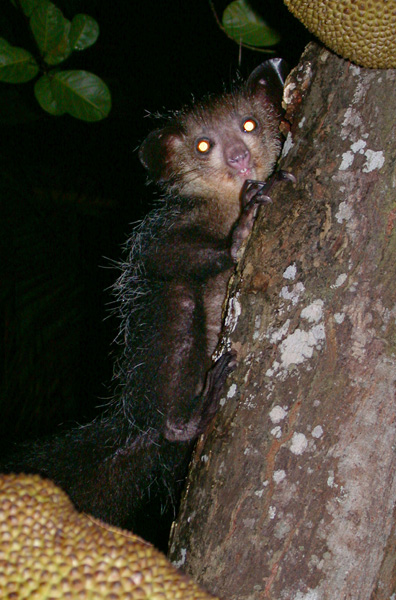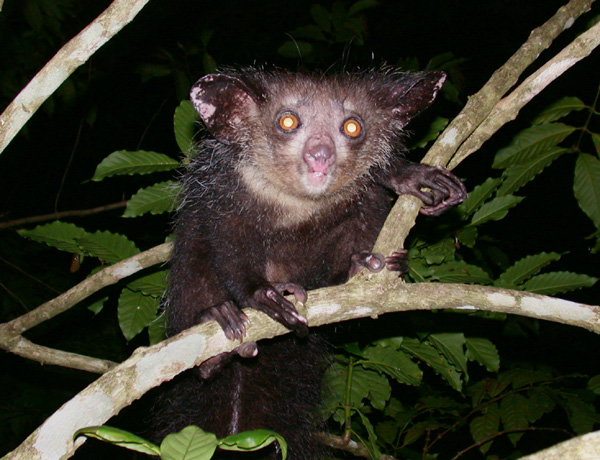Adaptations
The aye-aye has many adaptations for how it lives. First of all and the most unique adaptation is their long, thin fingers. These long fingers are used to tap on bark and nuts to find their food sources. Their third finger can grow to be up to six inches long and can move independently of the other fingers. This finger is used for tapping on wood to find insects and then extracting them from the wood when one is found. This finger also has uses for grooming and drinking.
Another adaptations is their oversized ears. They use these along with their long fingers to find their food. As they tap along the bark of trees or the coating of nuts, they listen for the vibrations to see if it contains an insect or food source.
The aye-aye had very large front teeth. A unique characteristic about these teeth is that they never stop growing. These teeth are used for gnawing at wood when looking for insects and also for breaking nuts and fruits when they eat them. This continual gnawing keeps their teeth to a length perfect for their eating habits.
Aye-ayes rely immensely on climbing and have adapted to be experts. Since they search for most of their food through out the tree tops, they need to be very quick to get to as many food sources as possible. Their claws help them with their climbing. The aye-aye is one of only two primates to have true claws.

